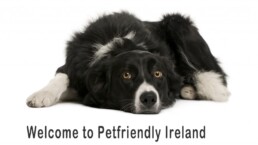Welcome to Petfriendly Ireland
"My Ma and Da spend all their time on their laptops, so I thought I'd get in on the act and set up my own blog.
I'm Baxter the border collie, I'm 4 years old, and I live in Dublin with Nessa & Peter. Before I met them, I lived with a whole lot of other pals in the DSPCA pound in Rathfarnham. That was great craic, but I missed my comforts and the long stretches up and down the mountains. So when Peter and Nessa invited me home, I decided to try them out.
Three years later, here I am on the internet! I'll be telling you about the sort of things I get up to, the fancy places I've stayed and the great walks I've found. But don't be surprised if Nessa and Peter put their paws in ... I have to fight them for a go on the keyboard!
See you later, Baxter."

